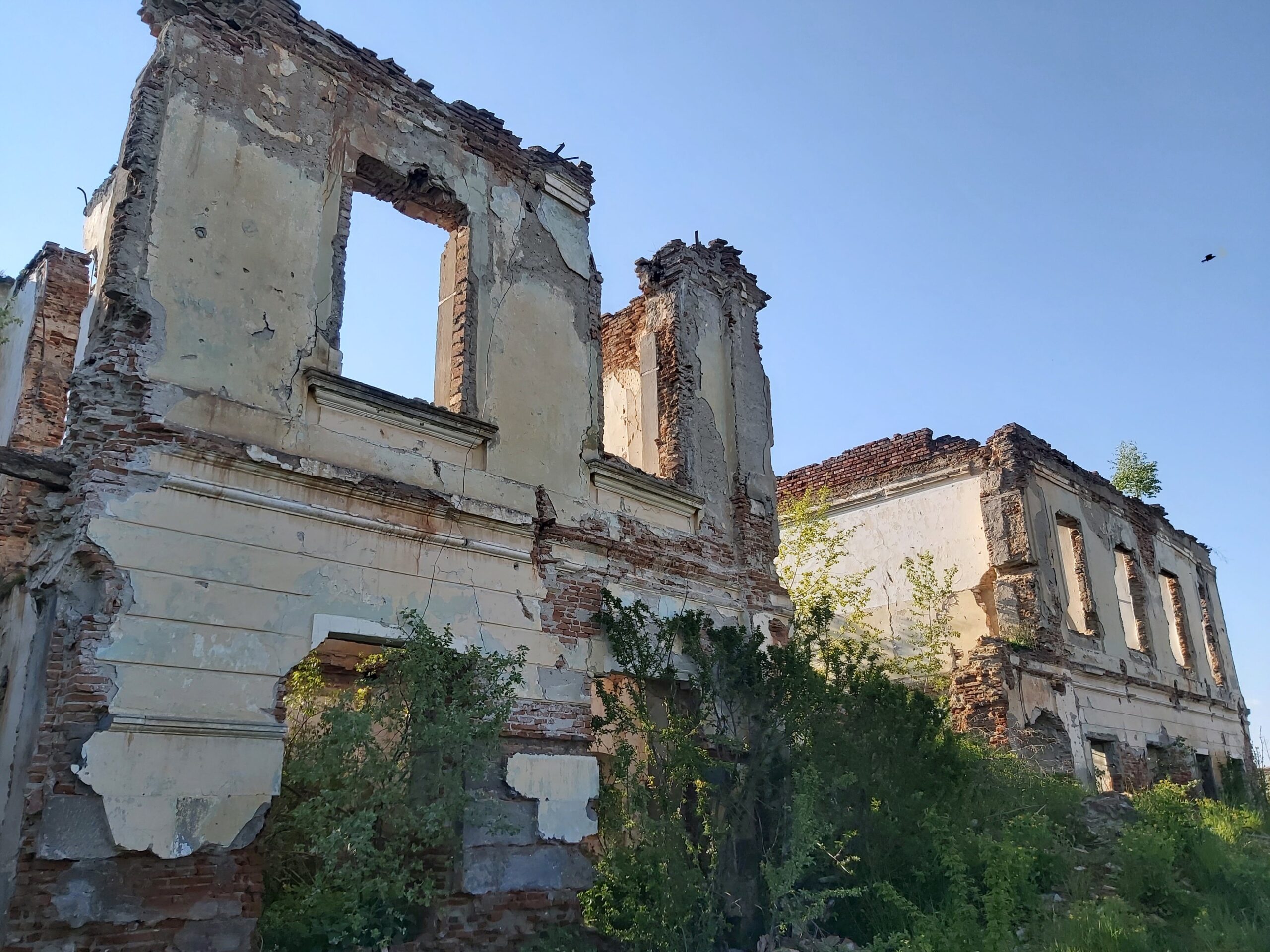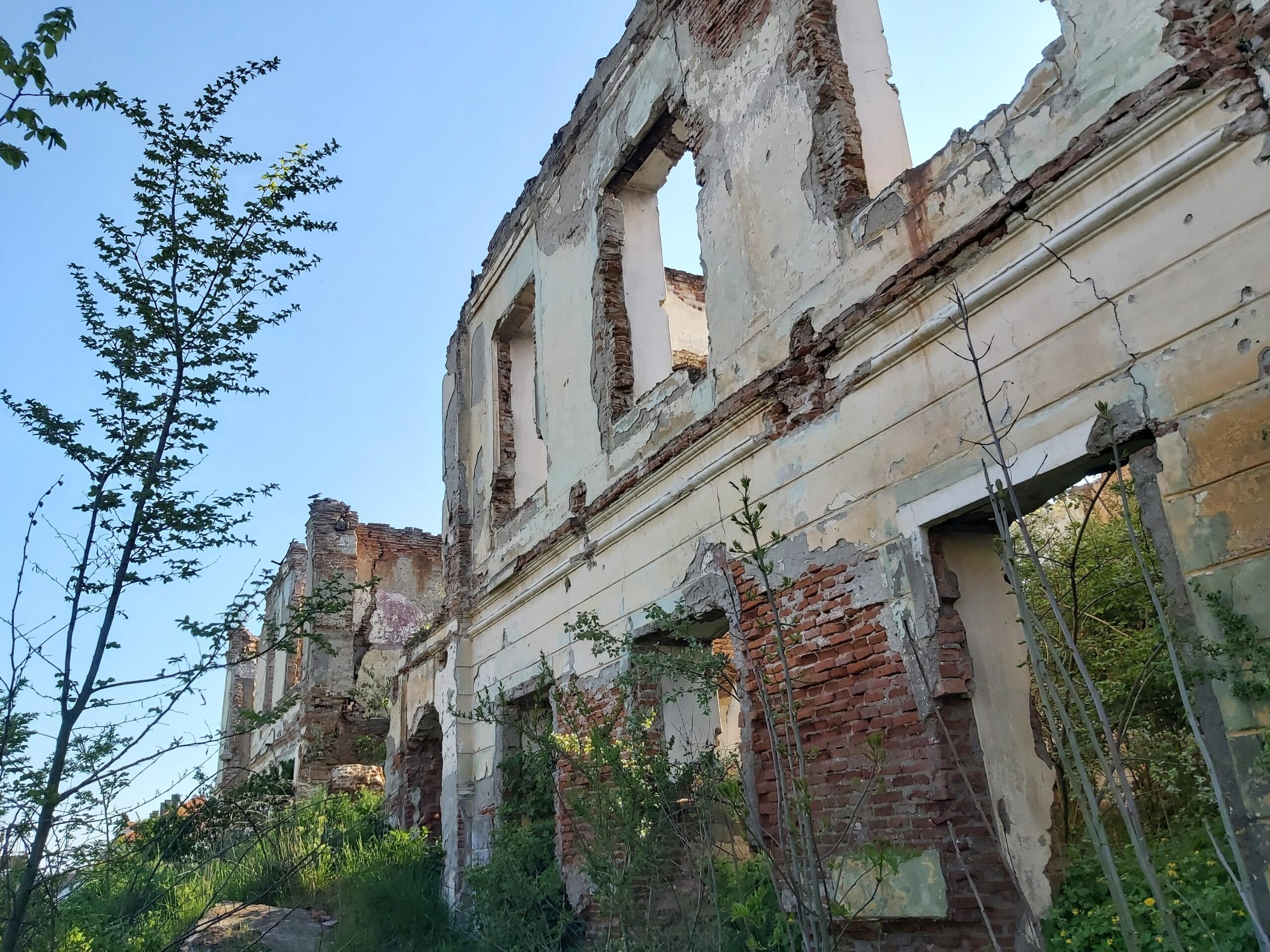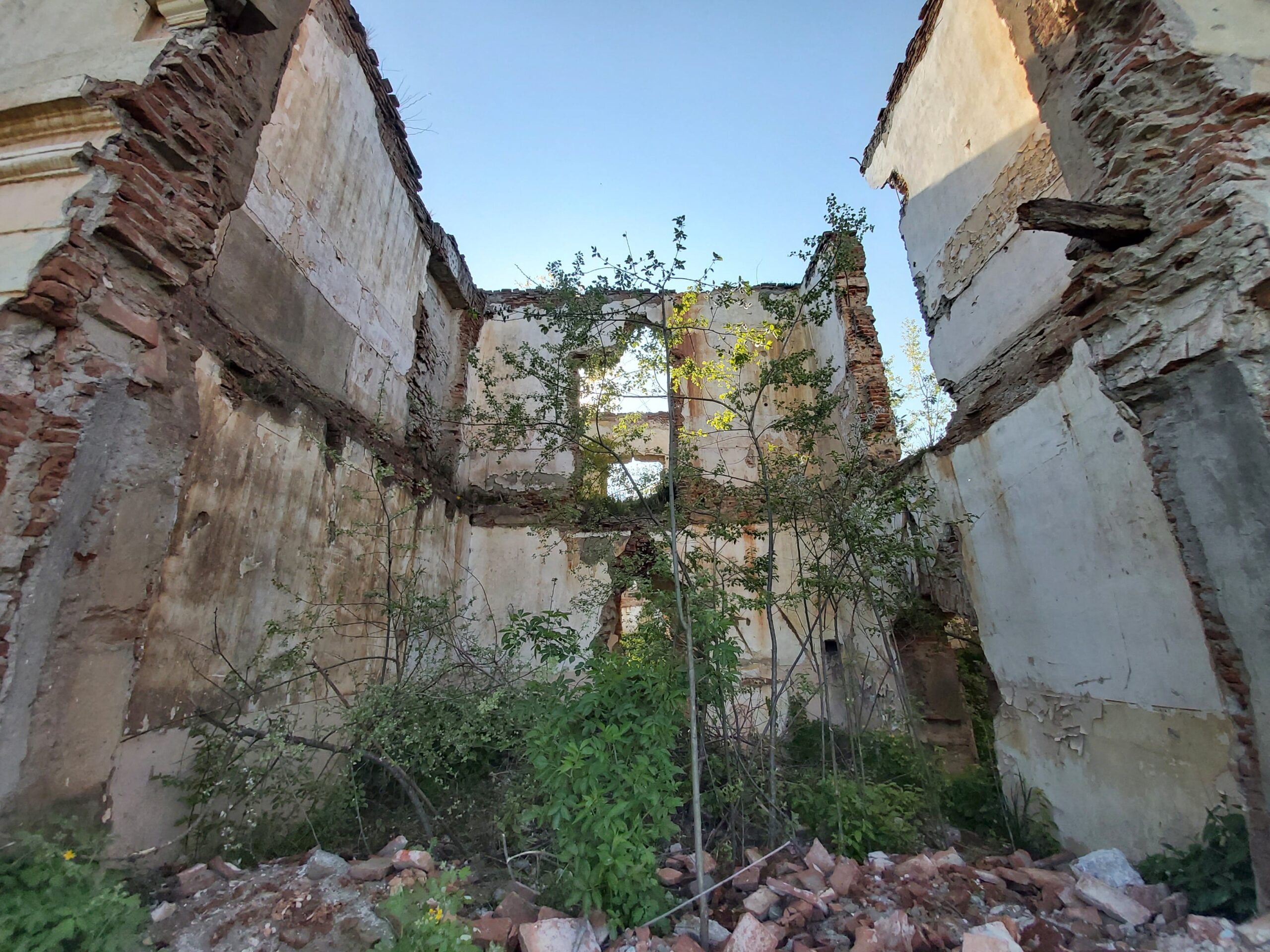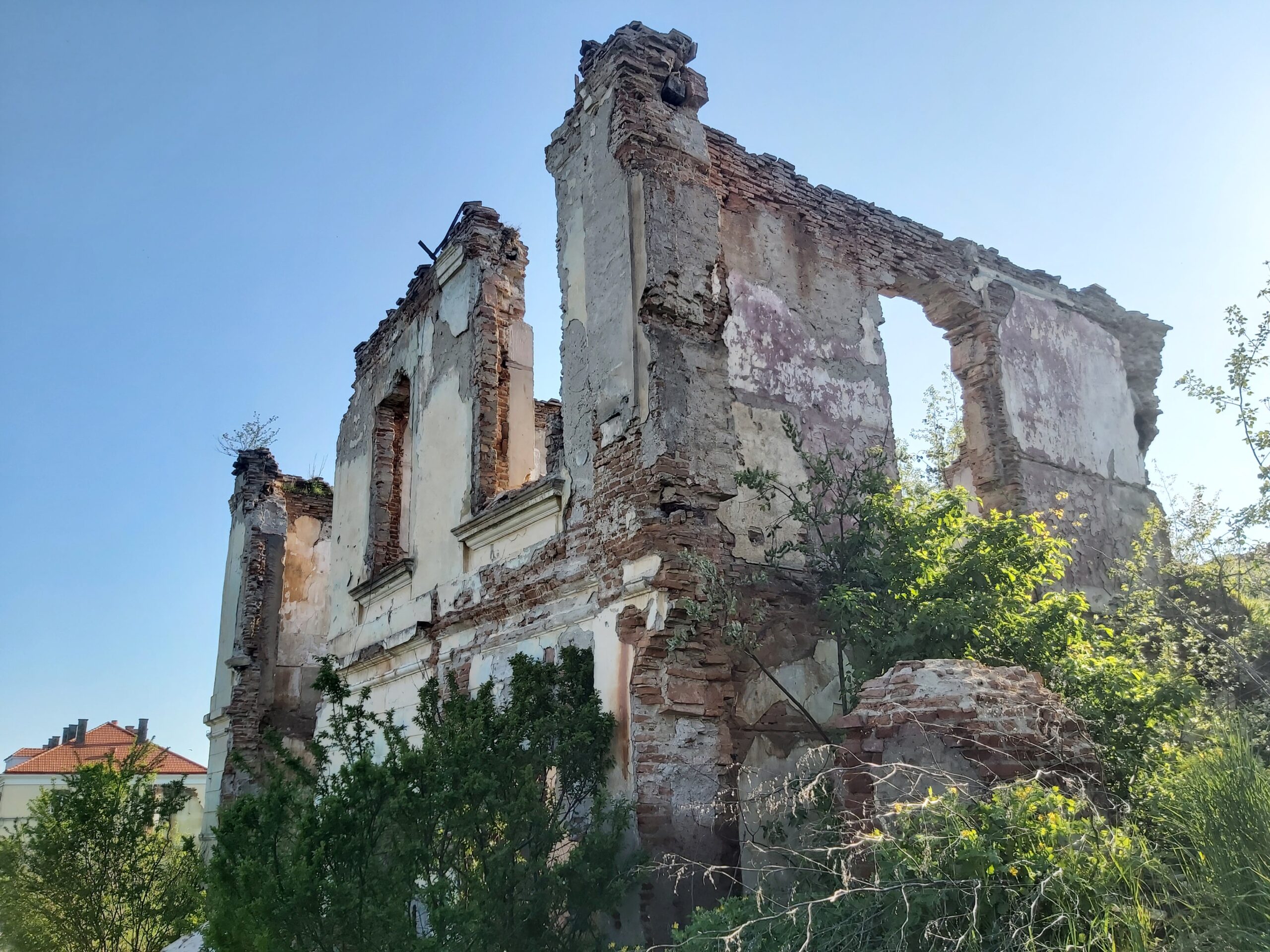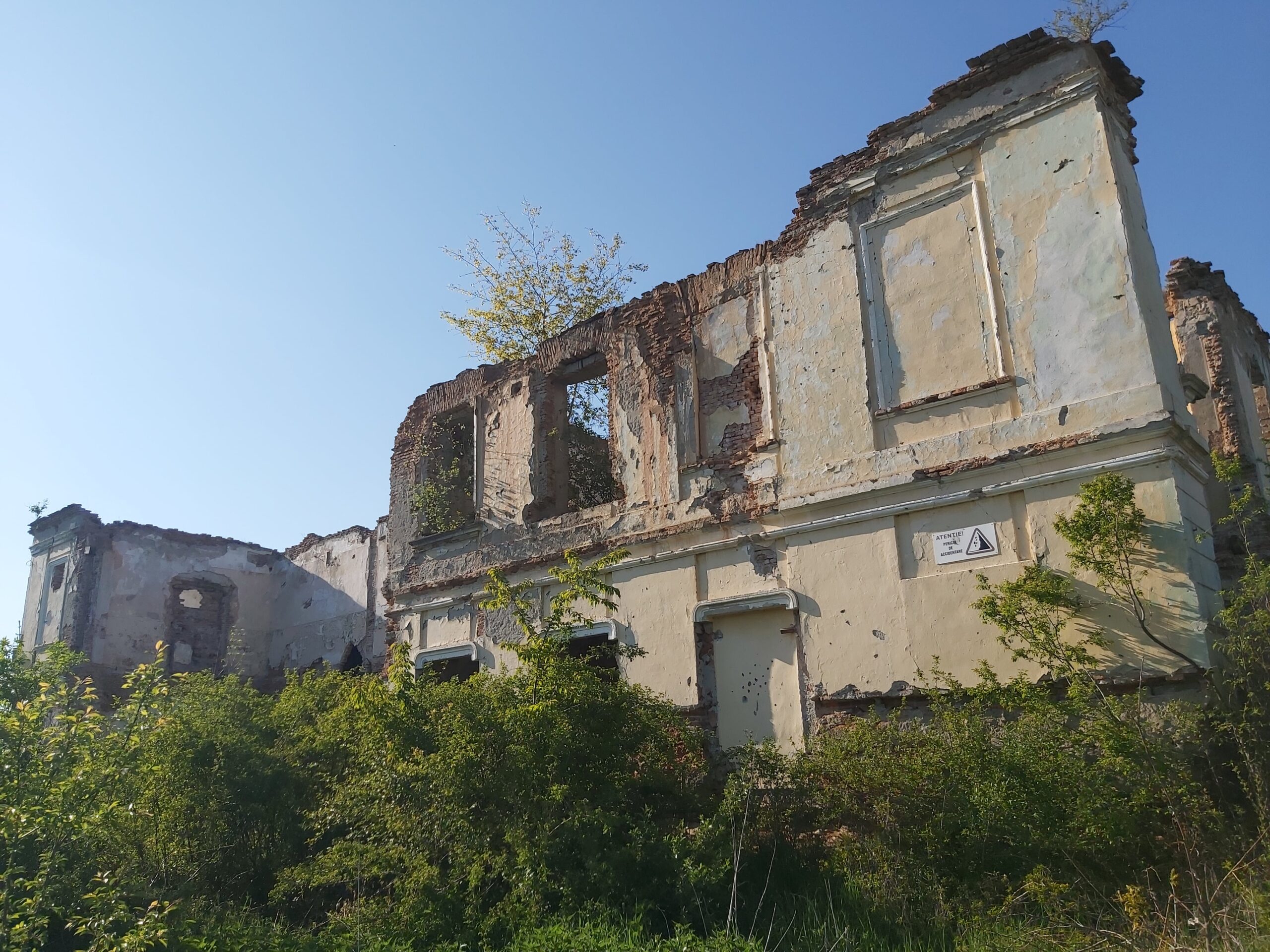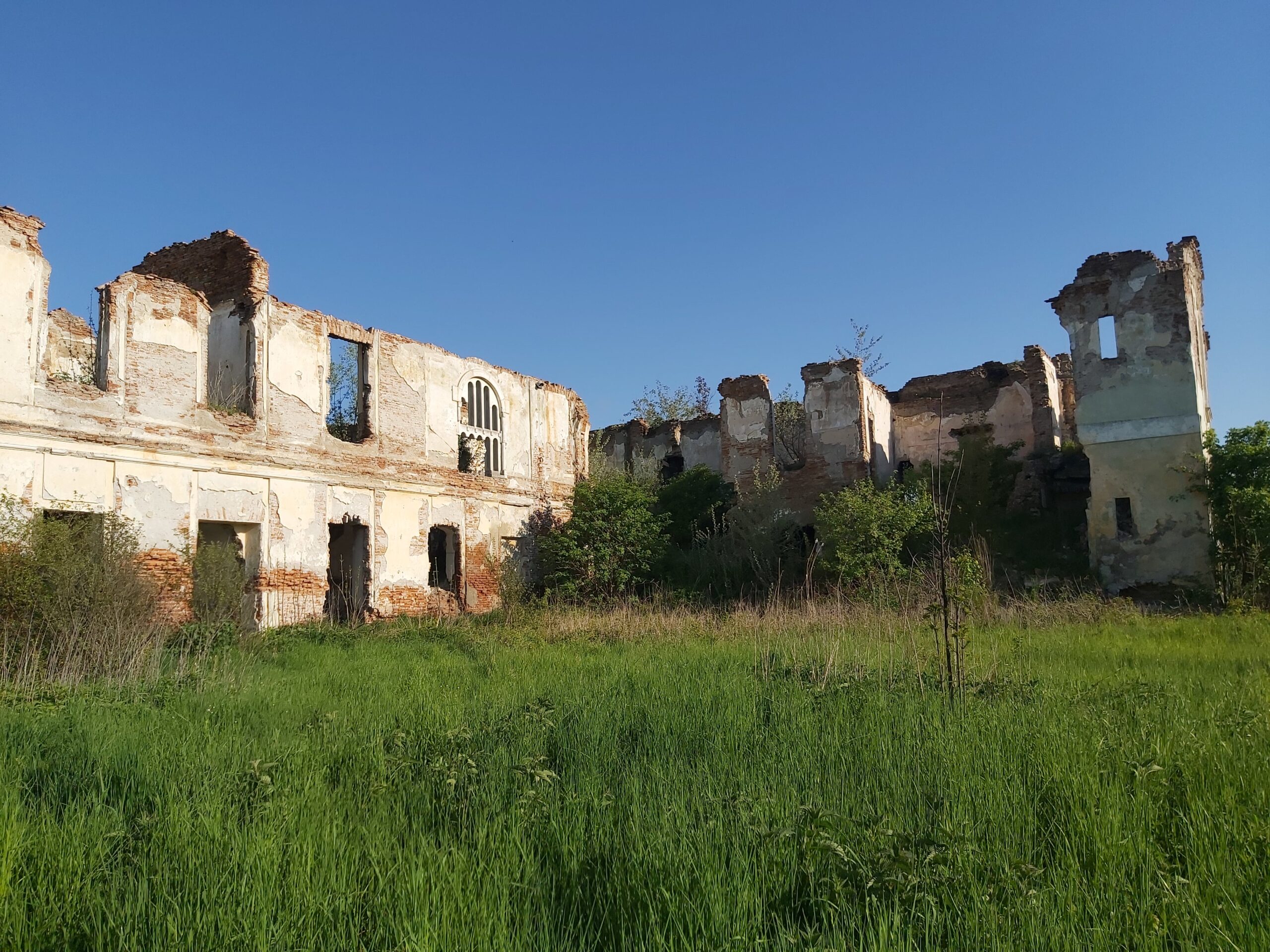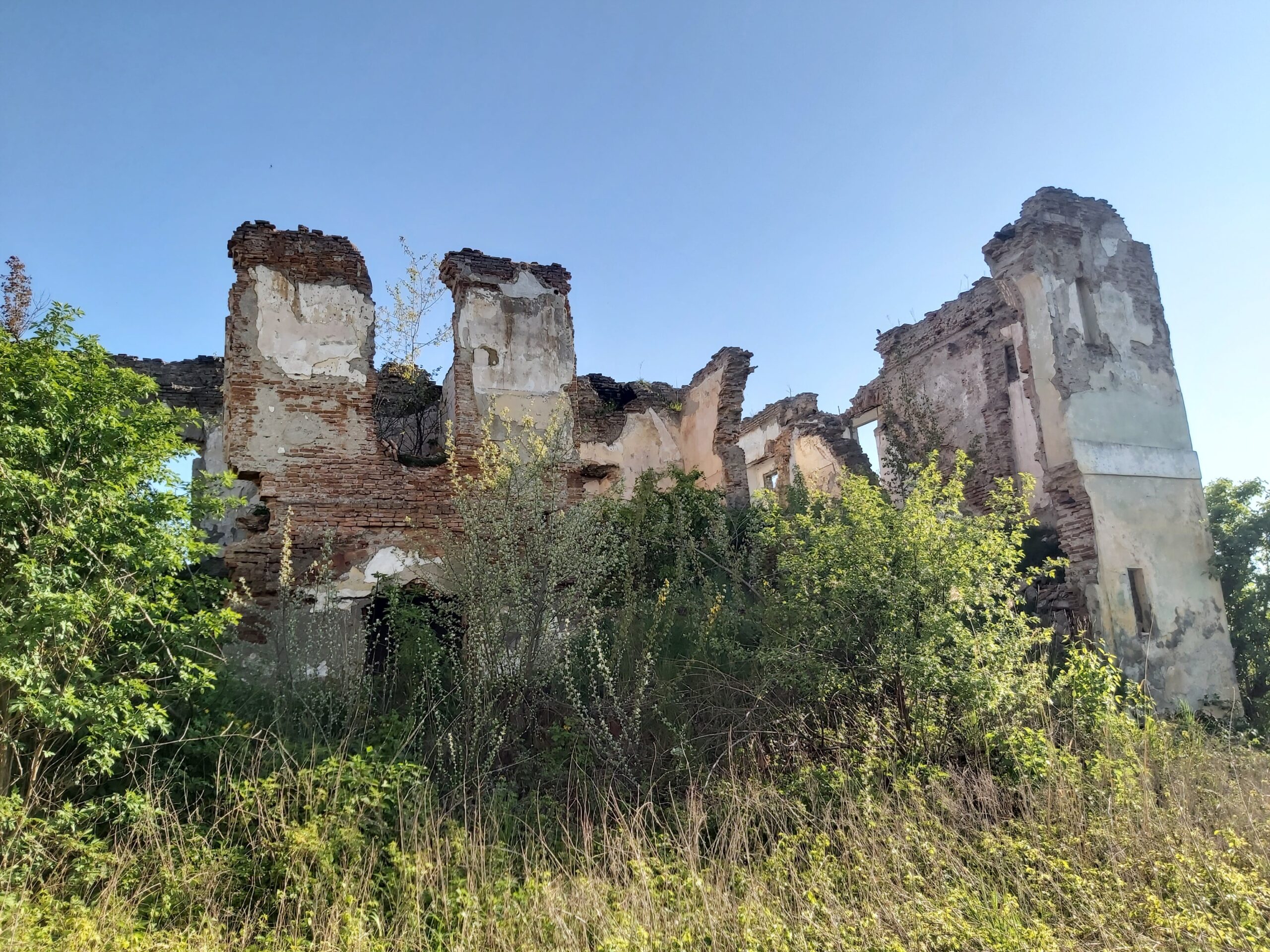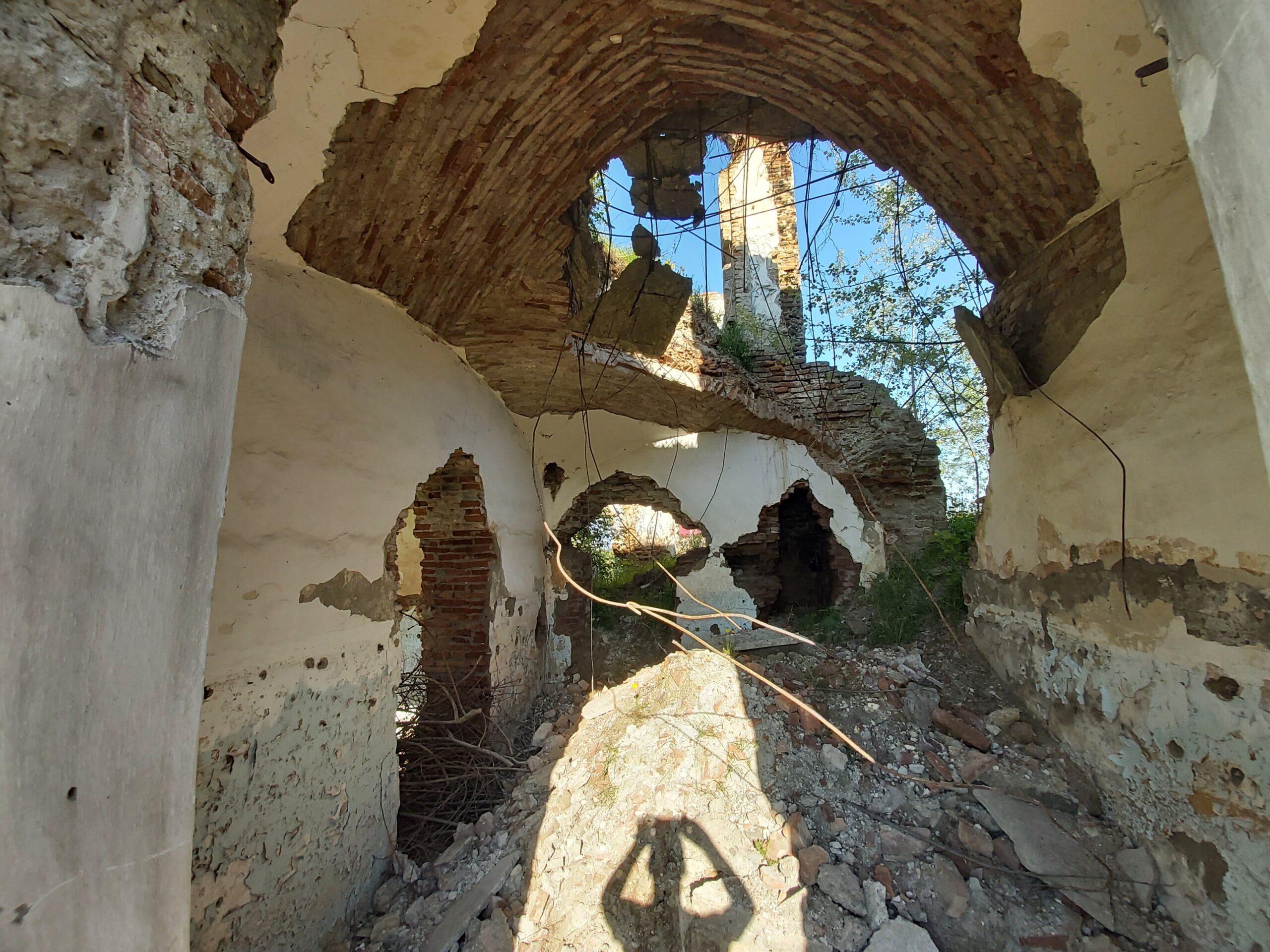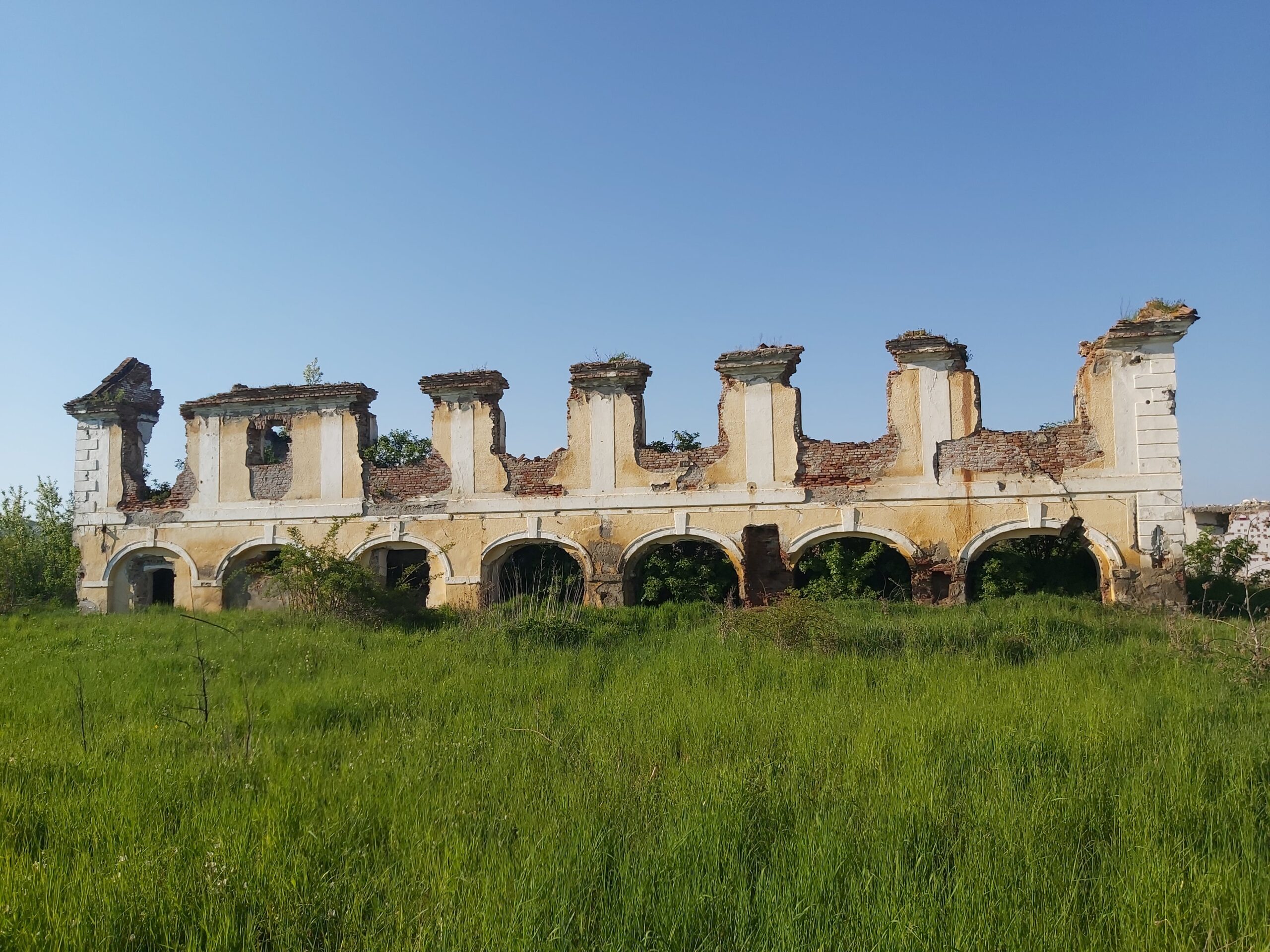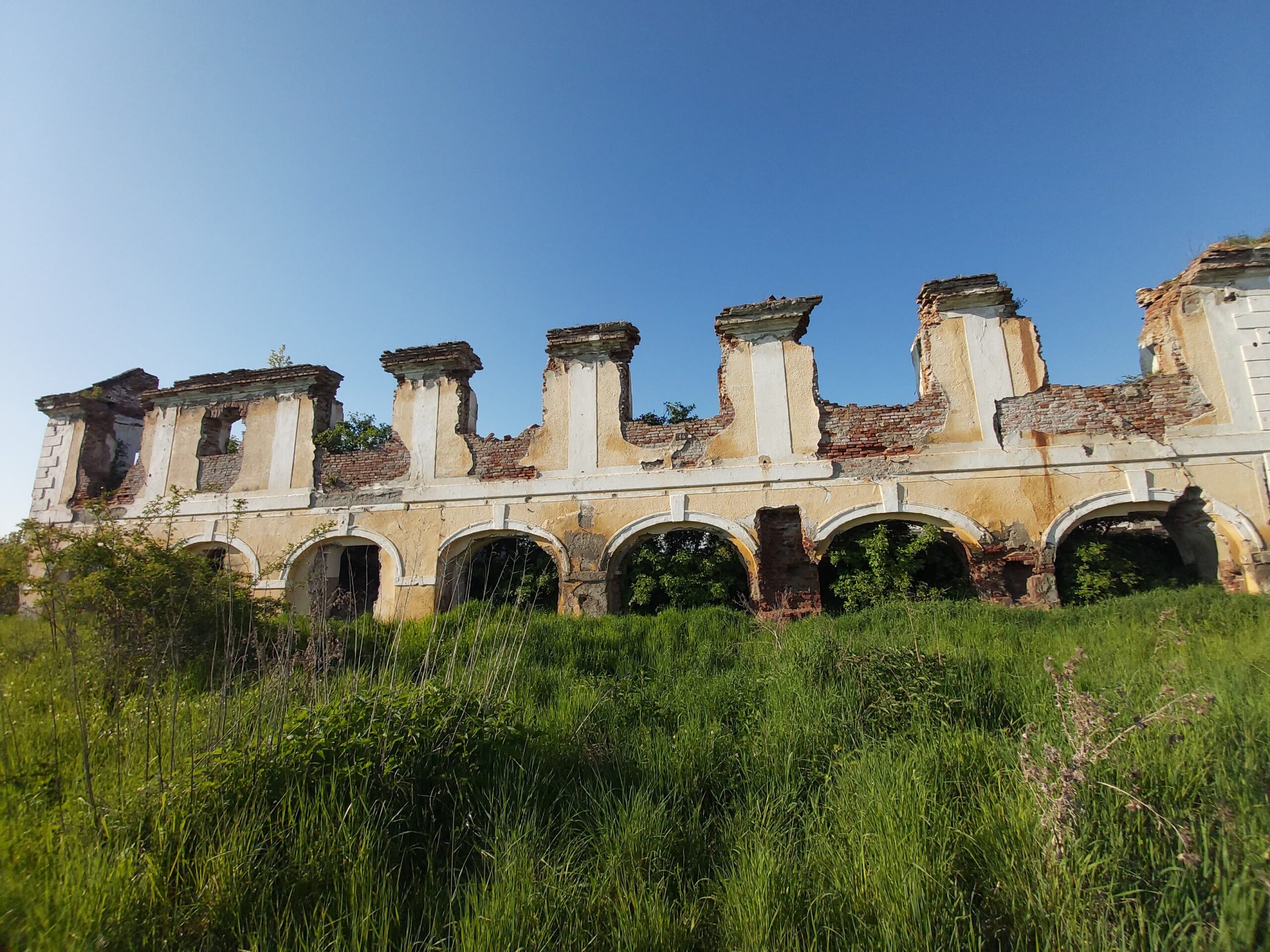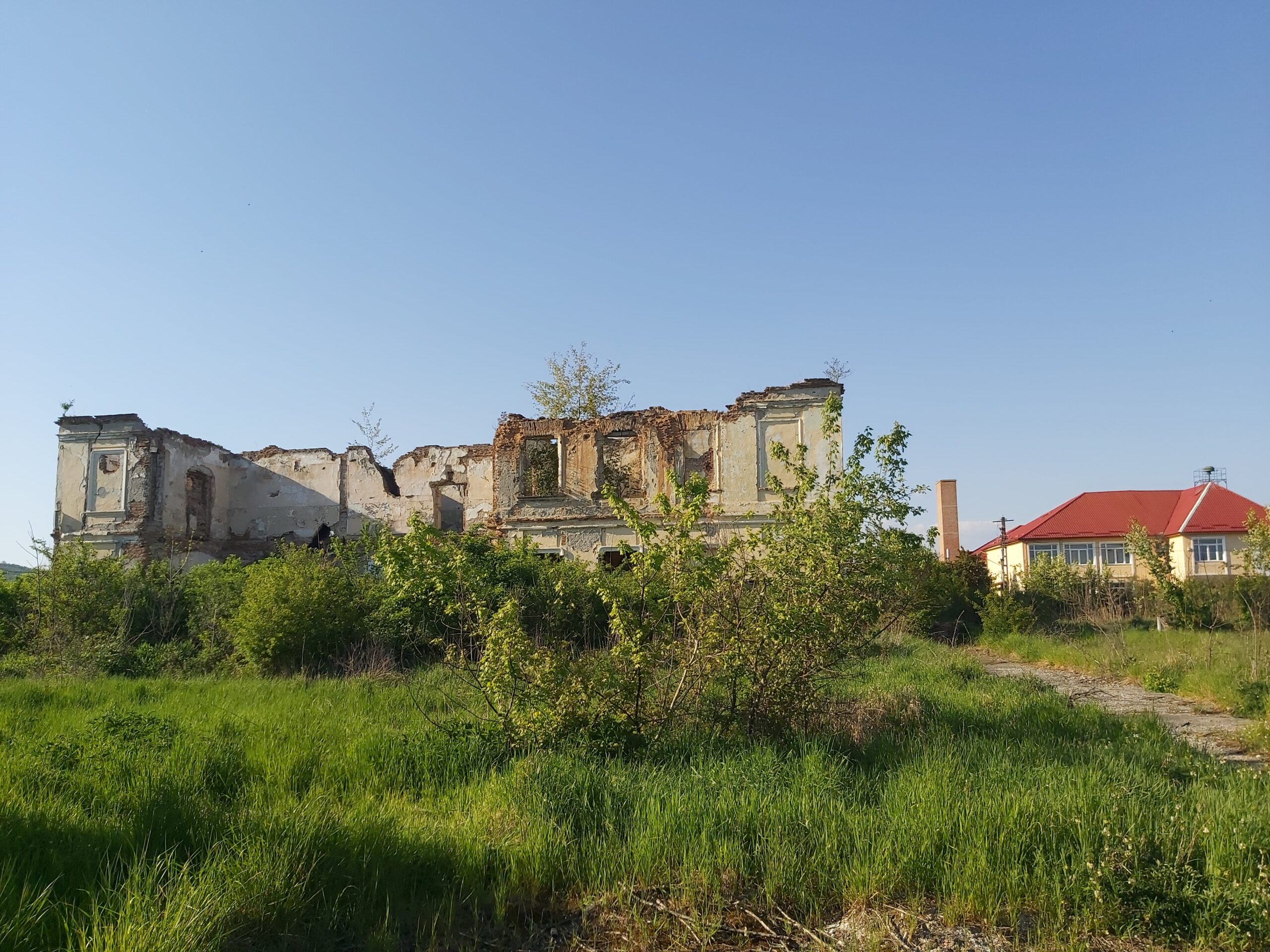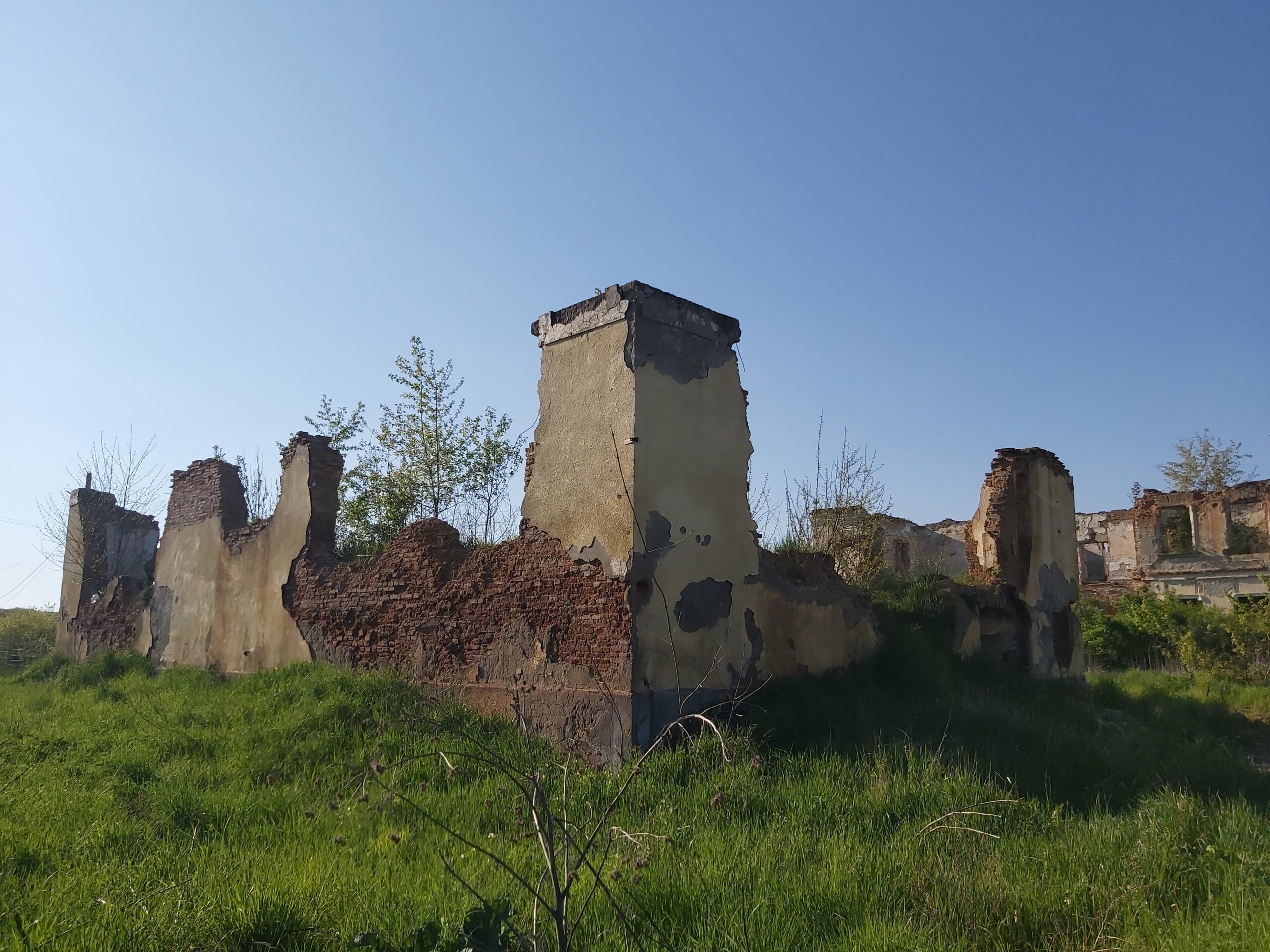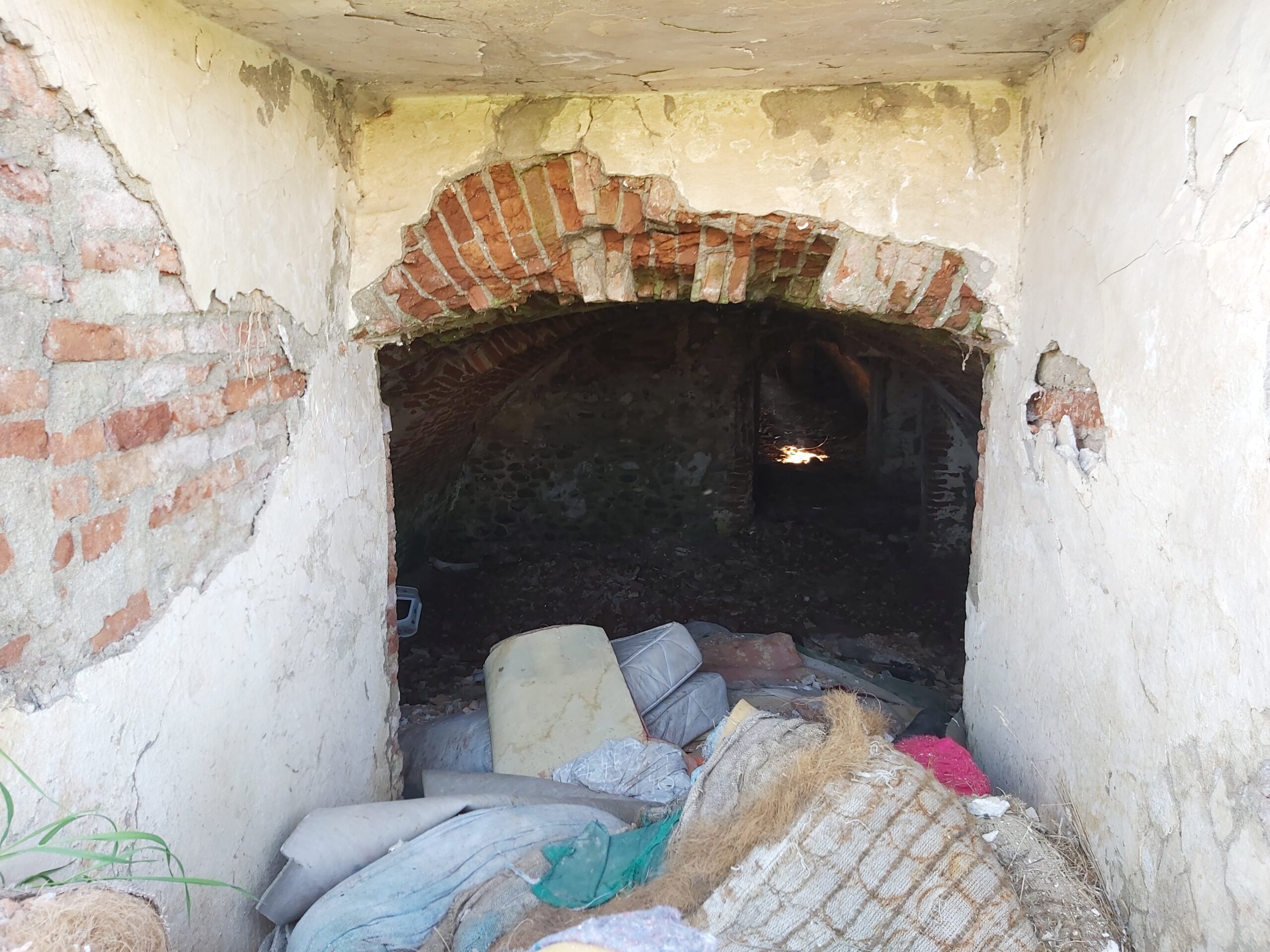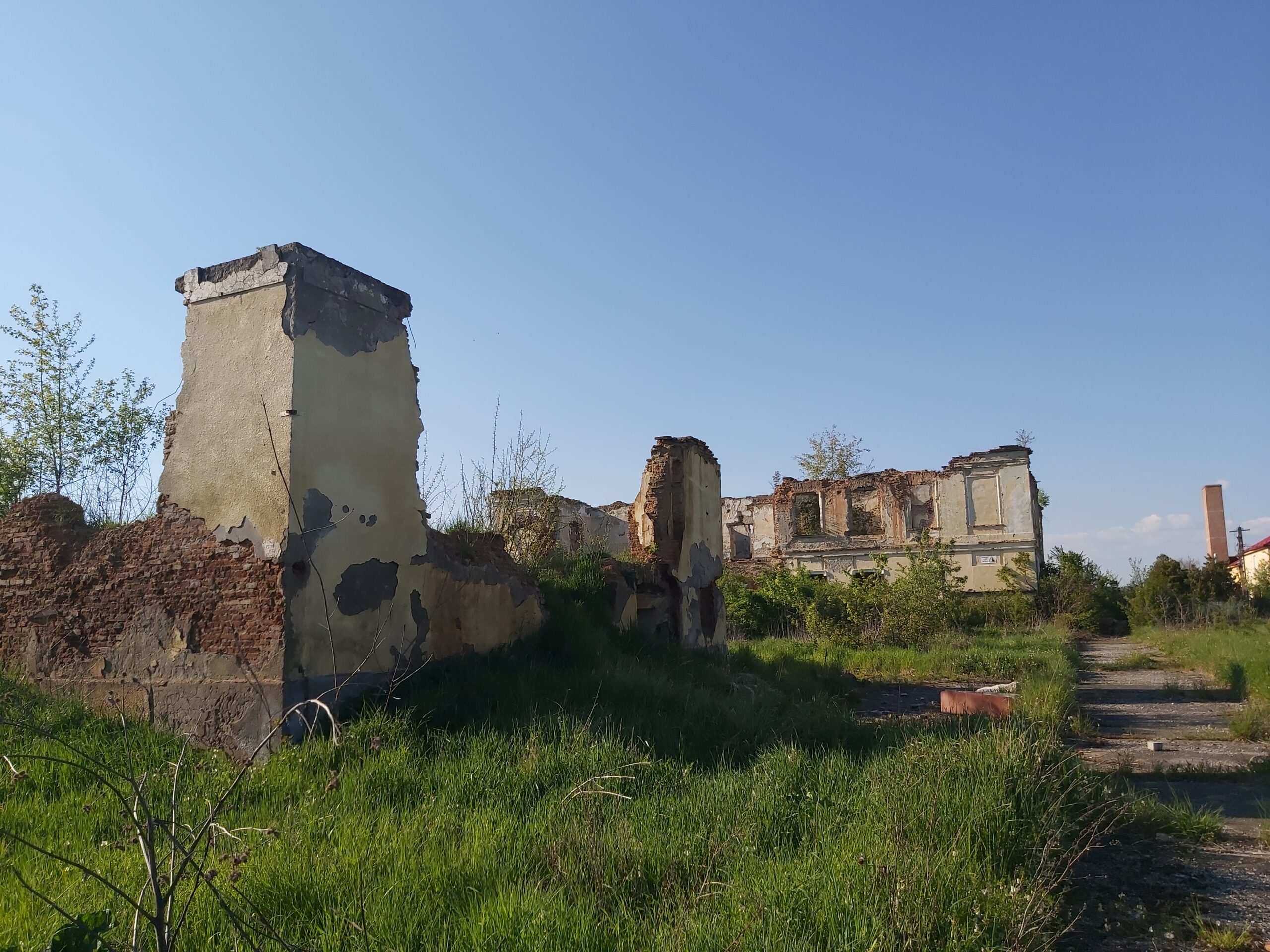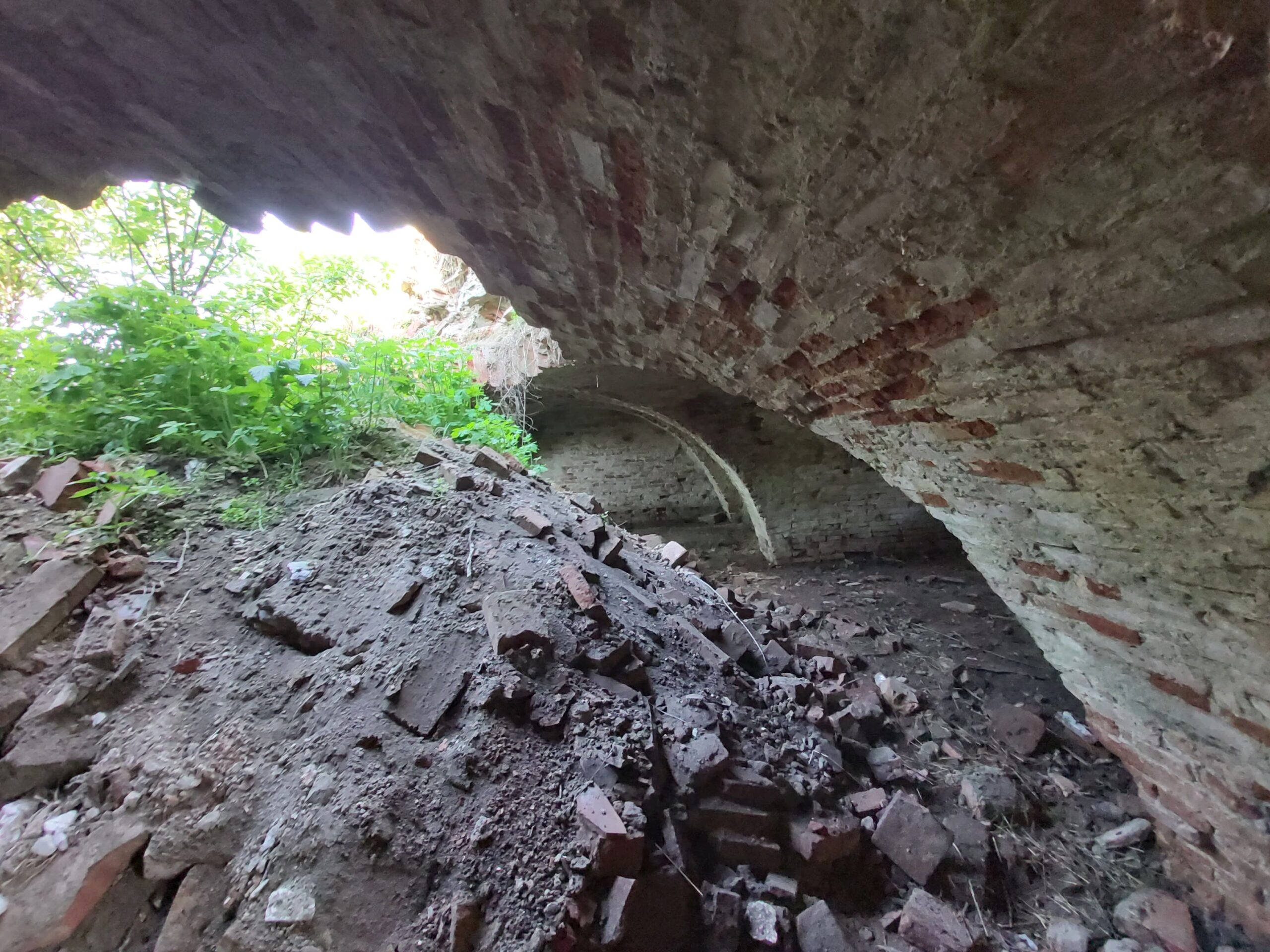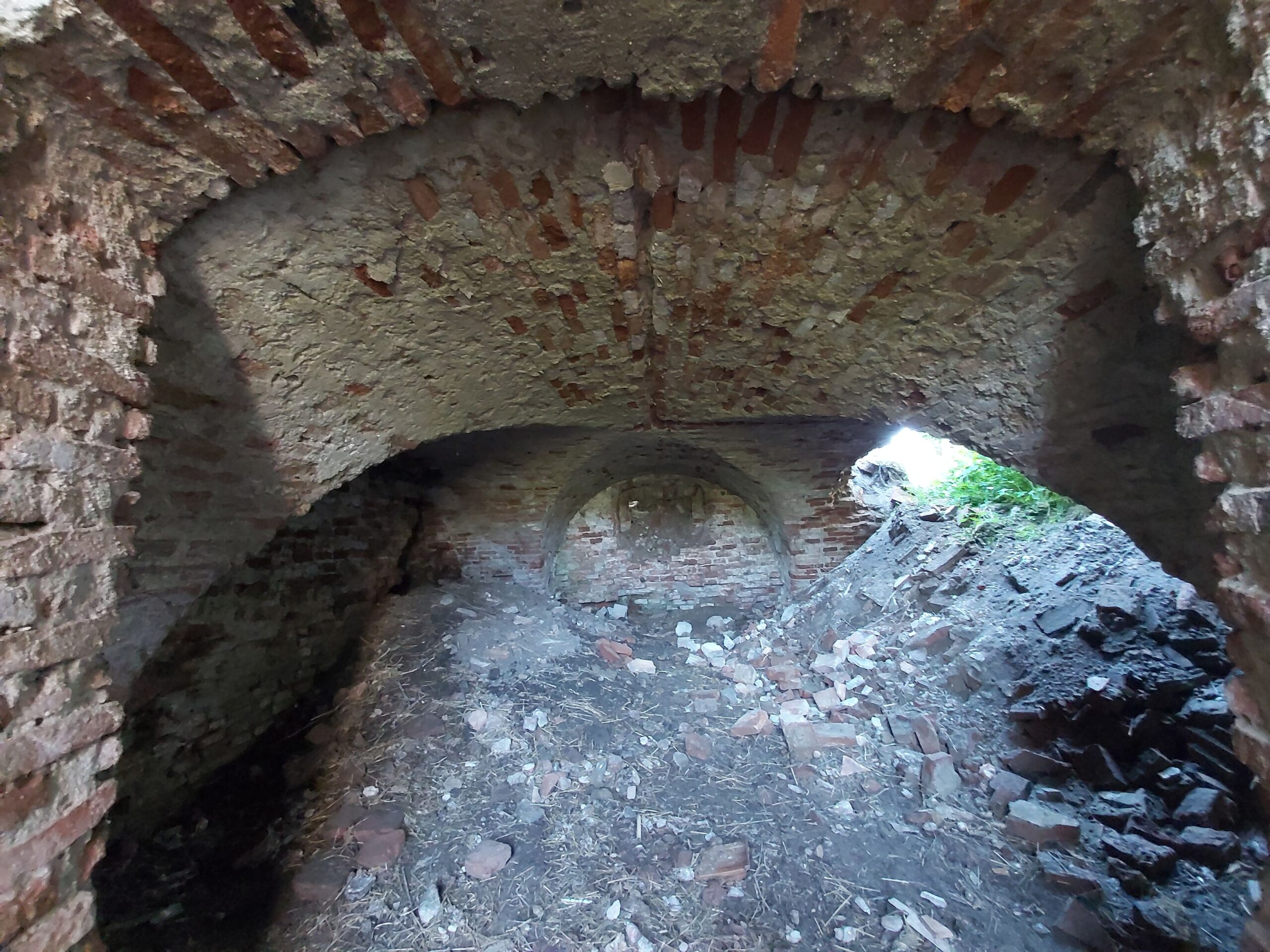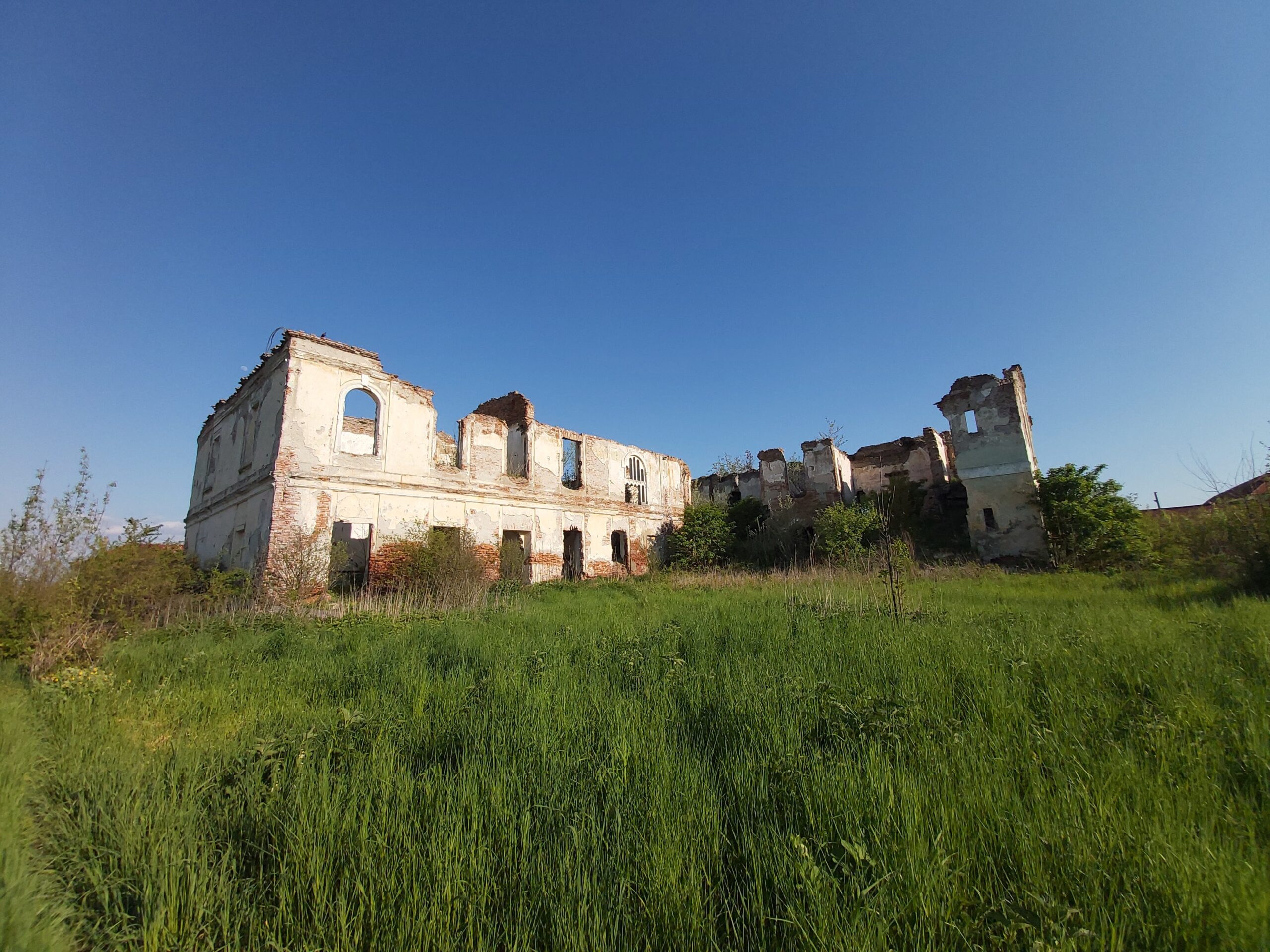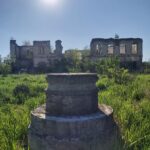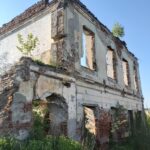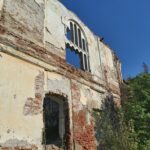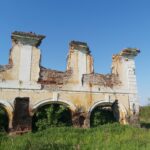Apalina (Abafája, Odendorf) – Mureș County
As famous as Reghin is for its finely crafted musical instruments, so great is the stain of shame for the disaster unleashed in the Apalina district. Once the main attraction of an elegant complex of almost 16 hectares, the Huszár Castle was destroyed in just a few years by the sinful triangle of owners, locals, and authorities.
The Huszár Castle in Apalina had an English garden with three lakes
Located less than 5 km from the center of today’s town of Reghin, the Huszár Castle has an unclear history due to the lack of written records, although historians believe that its story began sometime in the 13th century. What is certain is that the estate, owned by Pál Gyulai de Abafája in 1584, passed into the hands of Péter Huszár de Brenhida at the end of the 16th century. Later, most likely in the 1860s and 1870s, the classicist castle was modified by Baron Károly Huszár (III), acquiring romantic features such as the staircase window and the fountain in the castle courtyard.
With a total of 32 rooms, the Huszár Castle was abundant in unique and original elements, such as the coffered and painted ceiling of the large upstairs hall (made by the baron himself), the fireplace in the main hall, the library, or the beautiful garden. Initially designed in French style, then modernized in English style, the spacious garden with its three lakes had everything from swans and islets to various types of exotic plants and sculptures. Additionally, the complex was completed by a two-story Baroque-style building and a vaulted stable, both built in the 18th century during the time of Boér Huszár József, former prefect of Crasna County.
In just a couple of years, only the empty walls remained of the Huszár Castle!
Until the Romanian nationalization in 1948, the estate had a greenhouse and a stud farm, where the largest horse races in Transylvania were organized, with the last competition held in the fateful year of 1944. It is interesting to note that two important names in Hungarian literature are connected to the Huszár Castle ― writer Mikes Kelemen (1690-1761) and poet Dsida Jenő (1907-1938). The first, being József Boér Huszár’s half-brother, spent part of his childhood in Abafája, while the second was the tutor of Count László Huszár’s children, writing several poems at the castle. After nationalization, however, the fate of the estate took a dramatic turn.
The valuable tree species were mercilessly cut down and turned into firewood. The castle and the annex buildings became the headquarters of an agricultural cooperative and later a special school for children with disabilities. After the Revolution, specifically in 2005, the castle, by then in ruins, was returned to the descendants of the Huszár family. In 2010, Baroness Mónika Kolthay (Huszár) put the property up for sale for the exorbitant sum of 1.6 million euros, but neither the state through its right of pre-emption nor any other buyer showed interest. The baroness passed away in 2011, and the fate of the castle was sealed definitively in 2015, after the protective fence was moved.
In just one year, the padlock on the entrance disappeared along with the door, and the castle was simply devastated by thieves. Even today, considered private property, the category A (!) historical monument should have had the necessary security, which did not happen, attracting only some modest fines for the administrators for not complying with legal provisions. Additionally, the criminal cases opened for the theft of wood and bricks did not scare the thieves in Apalina; officially a district of Reghin, in reality a ghetto with thousands of locals living day by day, the majority of Roma ethnicity. In just three years, between 2016-2019, all that remains of the Huszár Castle are the empty walls.
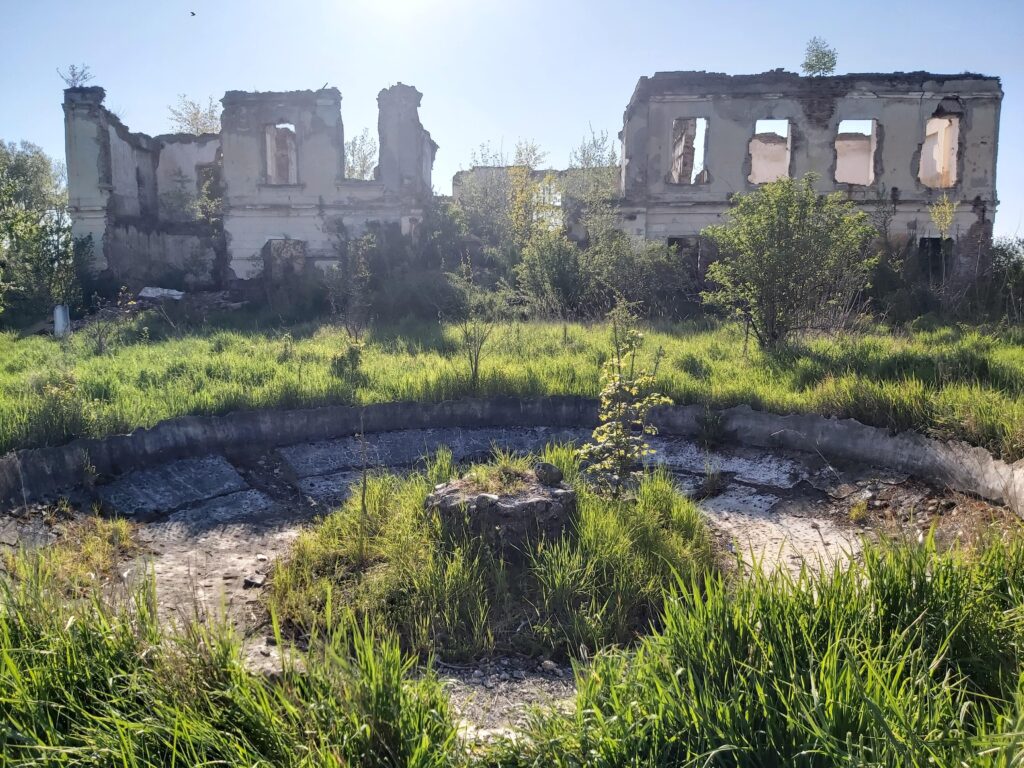
In 2015, the bells of the four churches in Apalina rang in vain simultaneously to raise awareness about the deplorable state of the Huszár Castle. Vandalized and stolen brick by brick, the destruction of the castle is, unfortunately, irreversible…

